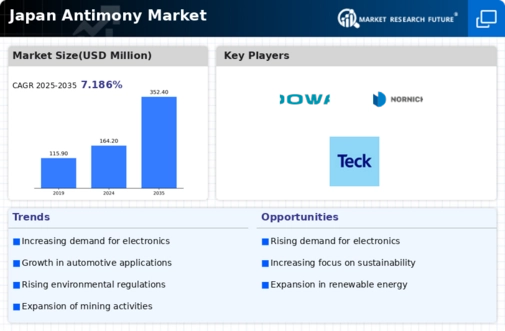The Japan Antimony Market presents a unique arena for competition driven by increasing demand across various industries, including electronics, metallurgy, and flame retardants. With the rise of environmental regulations and the shift towards sustainable production practices, companies in this market are under pressure to innovate and improve the efficiency of antimony extraction and processing. Competitors within this sector vary in terms of technological advancement, production capacity, supply chain management, and strategic alliances, making the landscape dynamic and increasingly globalized.
As Japan continues to rely on imports for much of its antimony, particularly due to limited domestic production, this aspect influences competitive strategies, emphasizing the importance of forming strong relationships with mining operations in other countries to secure stable supply lines. Hunan Nonferrous Metals Corporation has established a solid presence in the Japan Antimony Market through its commitment to high-quality production and innovative processing techniques. The company's strengths lie in its extensive experience in the nonferrous metals sector, which enables it to leverage advanced technologies for efficient antimony ore processing.
Hunan's established supply chain and its ability to scale operations allow the company to respond effectively to fluctuations in demand and maintain competitive pricing. Furthermore, its adherence to stringent quality control measures and environmental standards enhances its reputation among Japanese clients, facilitating long-term partnerships in the region. This steadfast approach not only solidifies Hunan's market share but also prompts a wave of confidence among stakeholders looking for reliable antimony sources. The Japan Mining Industry, particularly in the context of the antimony market, reflects a critical intersection of resources and technological advancements.
Entities within this industry are focusing on mining and processing antimony with a strong commitment to environmental sustainability and safety protocols. Japan Mining Industry offers a range of services that include the extraction of antimony ore, refining processes, and supplying various grades of antimony products tailored to industrial needs. The company's operational strengths are enhanced through strategic mergers and acquisitions that bolster its market presence and extend its technological capabilities.
By incorporating cutting-edge methodologies in antimony production and ensuring compliance with local regulations, Japan Mining Industry positions itself as a leader in the domestic market, paving the way for sustainable growth and innovation in the competitive landscape.














Leave a Comment